Instead of always opting for 'low-hanging fruit' – pun intended – like the common apple, orange or banana, there's something about the intense treacliness of a tropical fruit that has us donning our proverbial rainforest exploration attire just to reach those exotic morsels.

Image by Sophie Steiner/That's
While mangoes, passion fruit, figs, and even papaya are mainstream these days, we're all about that 'forbidden fruit,' if you will, going bananas for bayberries, weaving through the grapevine for guava, cherry-picking cherimoya, and making lemonade when life gives us lemons – or Buddha's hand citrus.

Image by Sophie Steiner/That's
Traversing acai to zarzamora, and everything in between, here is the list of our top 25 Asian fruits, ranked from delicious to downright disgusting.
1. Lychee
 Image by Sophie Steiner/That's
Image by Sophie Steiner/That's
With records in China dating back to 2,000BC, lychee are worthy of their long history for being a beloved fruit across warm-weathered regions of the entire continent.
Prized for their juicy, addictingly honeyed flavor, the blush-hued lychee flesh resembles the inside of a grape, with a smooth, pebble-like inner seed surrounded by an almost glowing aril, one that peels away from the leathery exocarp with ease, making them just too easy to crush.
Fun Fact: No need to pump the brakes on that consumption as lychee are high in the antioxidant oligonol and low in calories, so snacking away on these yummy fruits is equally delicious and nutritious!
2. Soursop
Image by Sophie Steiner/That's
Soursop is everything we want out of a tropical fruit – a pineapple aroma, a tangy flavor that sits at the cross section of a strawberry mixed with melon – tied together with a hint of lemon citrus – and a thick, velvety mouthfeel reminiscent of a ripe banana.
This behemoth of a fruit can grow up to seven kilos (15lbs), the majority of which is white pulp, customarily blended into a juice, served with shaved ice as a frozen treat, or cooked down into a stew or curry with meat.
It’s no surprise that this fruit’s popularity extends from Asia to South America to Mexico.
3. Egg Fruit
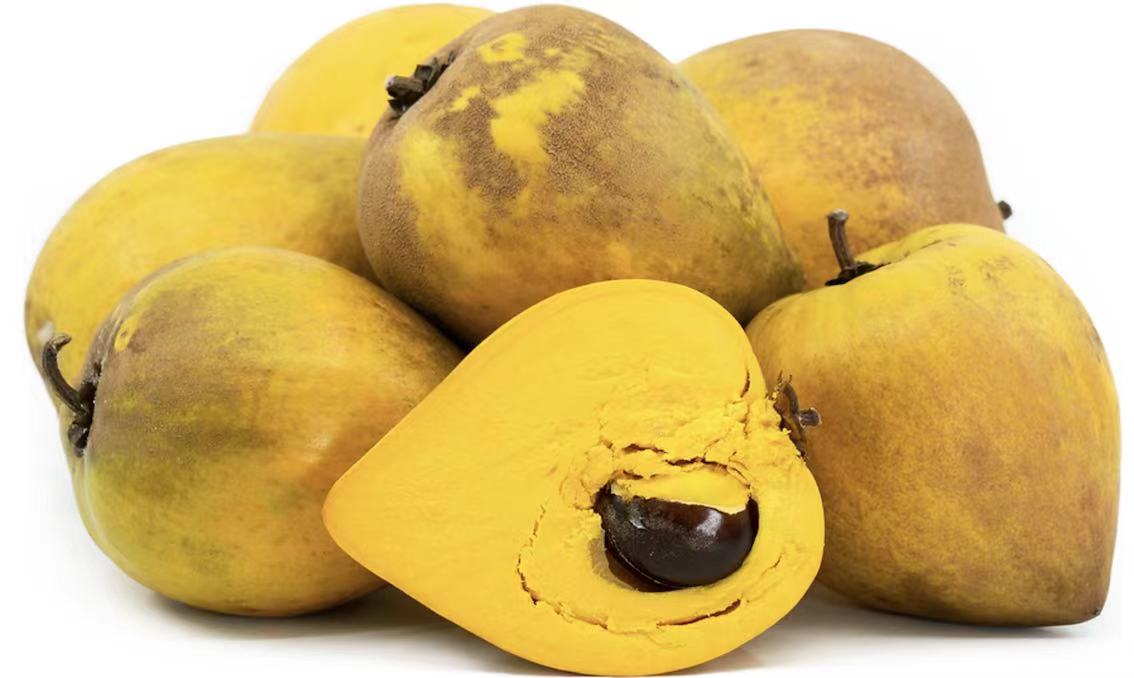 Image via Pixabay
Image via Pixabay
Heart-shaped and roughly the size of an elongated peach, egg fruit (or canistel) grow mainly in hot, humid climates like the Philippines, Vietnam and Cambodia.
Also called cake fruit, its name is owed to its dense yet crumbly mousse or dough-like texture, not unlike hard-boiled egg yolk or cheesecake.
The flavor is assertive, akin to a sugary pumpkin, and is conventionally eaten raw or used in jams, baking, or smoothies.
Or, blend it with some milk for an eggfruit nog!
4. Jackfruit

Image by Sophie Steiner/That's
Jackfruit has gained popularity in the west in the last decade for its chameleon-like ability to work in a wide range of dishes, from dinner to dessert.
When unpeeled and still in its shell, it can be easily confused with durian, but the key difference is that jackfruit shells have smaller blunt thorn-like ridges that soften as the fruit ripens, as opposed to the spikes of its more pungent counterpart.
Derived from the Malay word jakka, jack fruit can grow up to one meter long and weigh up to 100 pounds (45 kilos) – making it the heaviest fruit in the world – with each tree producing up to 250 individual fruits per year.
Peeled apart from large sections, each dumpling-sized pod tastes like a coastal sunrise – a mix between banana, mango and pineapple – with a surface like that of a peeled yellow bell pepper.
As jackfruit are neither gummy nor sticky, they make for the ideal on-the-go snack, each yellow bulb nibbled one after another.
Young jackfruit is less fruity and firmer, lending itself better to savory dishes like curries and chilis, and as a grilled meat alternative, like vegan-friendly BBQ jackfruit 'pulled pork.'
Fun Fact: The bark on jackfruit trees can be used to dye monks' clothing, as it releases a boldly orange hue when soaked in water.
5. Mangosteen
 Image by Sophie Steiner/That's
Image by Sophie Steiner/That's
Known as the Queen of Fruit, the mangosteen is most famous for its cooling effect, according to Traditional Chinese Medicine (TCM).
This coveted fruit can be hard to come by as the finicky tree on which it grows only bears fruit within 20 degrees of the Equator.
The thick outer exocarp is rock hard, more like the shell of a nut, and entirely inedible. Yet it gives way to a pure white, slippery and silky inside that is segmented into 4-6 sections like a mandarin orange.
As you plop each segment into your mouth, the equal parts tropical citrus, tarty berry, and creamy pulp melts instantly, leaving you with a smooth, polished stone-like seed.
Praised for its optimal balance of sweet and sour, mangosteen is also incredibly refreshing.
Fun Fact: You can tell how many sections will be inside your mangosteen before opening it just by looking at the flower shape on the bottom of the mangosteen shell – each ‘petal’ representing one section.
6. Longan
 Image by Sophie Steiner/That's
Image by Sophie Steiner/That's
If an onion crossed over to the juicy fruit world, a longan would be the result.
Usually overlooked for other more colorful options, these marble-sized, vine-connected, brownish-gray spheres are fleshy and tender, sweet 'onion juice' dribbling from each peeled orb.
Unlike most tropical fruits, longan season extends into the colder months, as it has a tolerance for a wider latitude of temperatures.
Part of the soapberry family, along with lychees and rambutans, longans tend to be less aromatic (yet equally supple), and are therefore also used when dried as the concentrated flavor isn't too overpowering.
7. Rambutan
Image by Sophie Steiner/That's
Although related to lychee, the rambutan’s outer shell and rough pit are what cause a major distinction.
A rambutan’s 'hairy' skin is thicker and sturdier so as not to peel away from the fruit as easily as a lychee, dropping it further down on our list of favorites.
The semi-translucent edible part of the rambutan is thicker, due to its higher fiber content, and the flavor is temperately sweet, like a juicy strawberry, with a fruity earth aroma, akin to rocks you find under a running river.
Fun Fact 1: Rambutan trees can grow up to 80 feet (24 meters) and produce fruit only twice a season. The dark rambutan seed contains oil that can be extracted and used for cooking.
Fun Fact 2: The rambutan’s most notable characteristic is its leathery red skin, covered in pliable spines – or hairs – which provide this tropical fruit with its name, the Malay word for hair: rambut.
8. Snake Fruit
Image by Sophie Steiner/That's
When stealing even the quickest glance, it’s obvious why snake fruit bears its name – the scaly, python-like leathery shell pulls away like a serpent shedding its outer skin layer.
Gross association with snakes? Kind of.
Delicious? You bet your snake butt it is!
Once the peel is removed, you’re left with 2-4 over-sized garlic clove-shaped pieces. There's also a large, smooth seed in the center of each piece, but the rest is edible, crunchy like a fresh fall apple.
The flavor of salak, as it’s known in Malaysia and Indonesia, ranges from mildly acidic to sour, and – unexpectedly – leaves your mouth with a drying sensation.
9. Santol

Image via Pixabay
Santol is essentially two mouth-watering fruits in one: at first, the perfect combo of a peach and a baked apple; then, as you work your way further inside the fruit towards the white center, it progressively becomes more alike a soft mangosteen, but with an even stronger balance of saccharinity and acidity.
Santol grows primarily in hot and humid climates – think Thai or Philippine islands – where it's eaten fresh or used in curries, soups or salads.
Not-So-Fun Fact: Be careful not to swallow the seeds; every year there are roughly 200 cases of emergency surgery due to abdominal obstruction resulting from santol seed consumption.
10. Ambarella

Image via Pixabay
Eaten in many equatorial countries across the globe, ambarella falls somewhere between passion fruit, pineapple, and unripe mango on the flavor spectrum, with a crunchy firmness.
Used as a souring agent in shrimp paste in Indonesia; employed for its crispy texture in rujak salad in Malaysia; soaked in vinegar with chilis as a Sri Lankan snack known as achari; coated in sugar, salt and chili as street food in Vietnam; macerated with licorice extract in Jamaica; or made into jam in Fiji – there seems to be an endless way to devour this tropical fruit, each one better than the last.
11. Pomelo
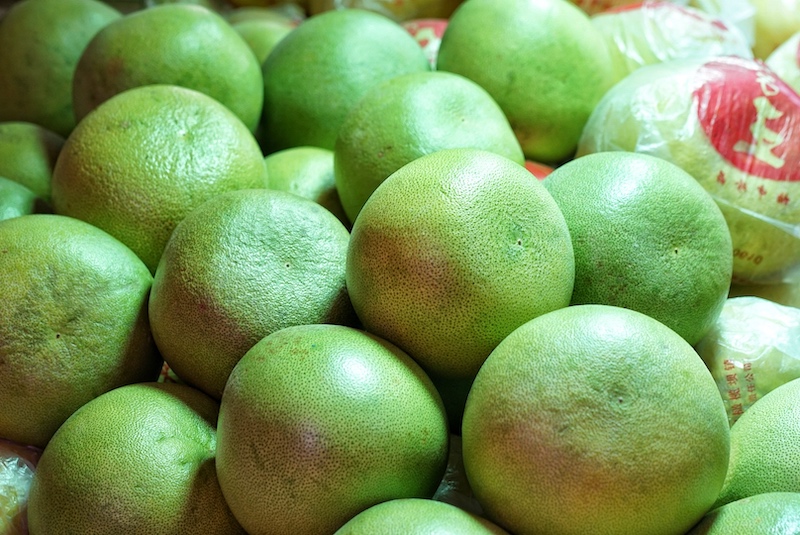
Image by Sophie Steiner/That's
Pomelos are all that is awesome about grapefruits, without the excessive bitterness, nor the hassle of juice-squirting everywhere.
These rotund fruit, typically found in Thailand, can grow to be the size of basketballs, with large, light pink segments that are easily separable from the skin.
Although the thick peel can seem daunting, we found many YouTube tutorials on how to effortlessly remove it, leading to an exponential increase in our pomelo consumption.
Fun Fact: Grapefruit is actually a hybrid fruit originating in Barbados, first documented in 1750 as an accidental cross between an orange and a pomelo – which was introduced to the Caribbean from Asia in the 17th century.
12. Custard Apple

Image by Sophie Steiner/That's
The custard apple, also known as a cherimoya, may appear to be the fruit cousin of an artichoke from the outside, but when it’s ready to eat, the meaty middle is exceedingly soft, leaving consumers with a treacly pulp.
The fiber-filled flesh is delicate with a – you guessed it – custardy feel that translates perfectly to thick smoothies and milkshakes.
13. Tamarind
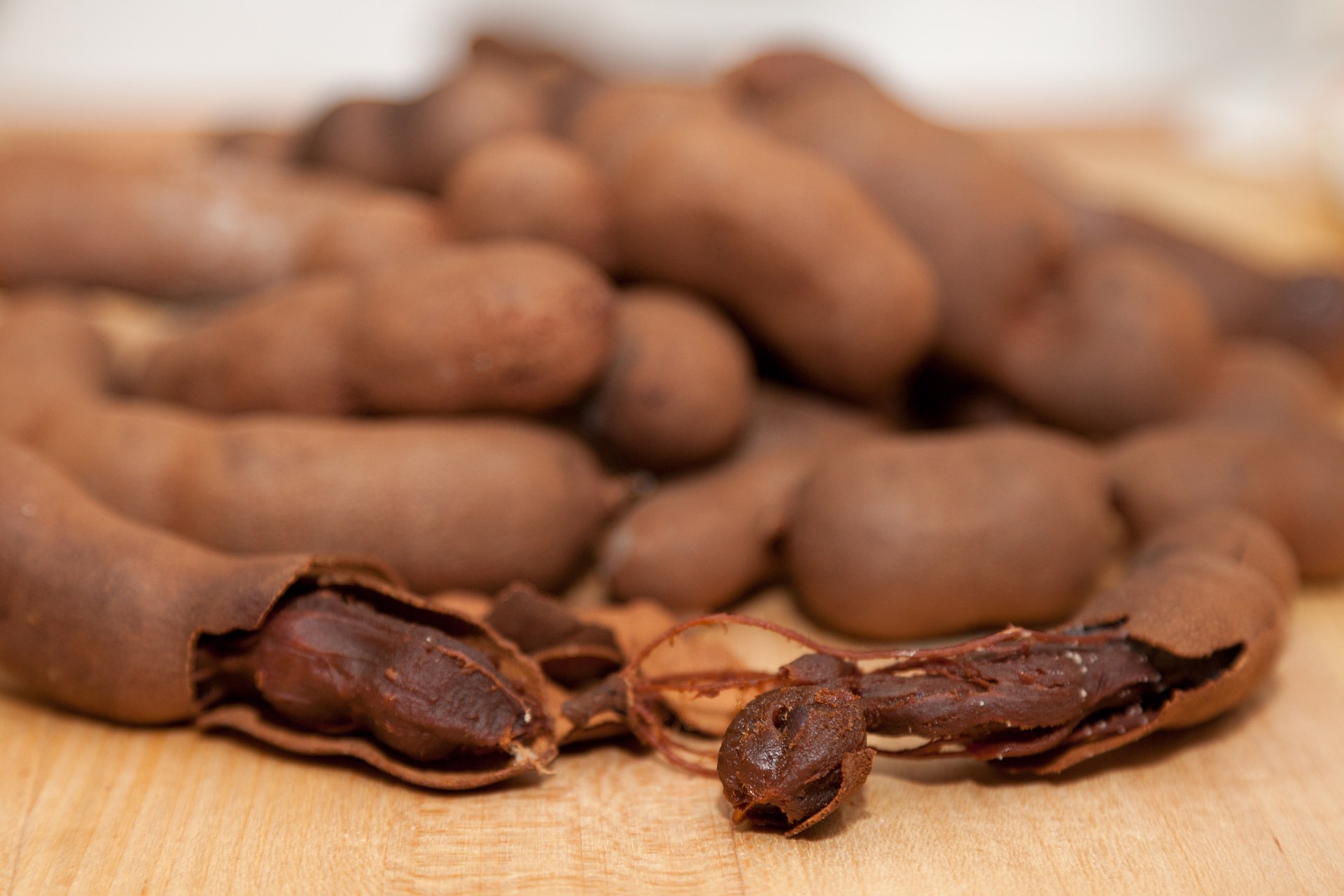 Image via Pixabay
Image via Pixabay
Tamarind may be quickly dismissed as brown, dried bean pods by those not in the know, when – in fact – the stringy, thick pulp inside is sharply sour and full of flavor.
Like that of a medjool date, the sticky, gooey texture lends itself well to amping up the flavor in curries, soups and tropical-inspired cocktails.
Tamarind are used as a key cuisine component in many warm-climate countries around the world, and the extra dose of fiber they provide aids in digestion.
14. Yangmei | Waxberry
Image by Sophie Steiner/That's
If you’ve lived in China during the months of June and July, then you’re probably already familiar with yangmei, or Chinese waxberry or bayberry.
Their short season, coupled with the fact that they only grow in South and Central China, make them all the more appealing.
If a pomegranate, strawberry and blueberry were combined into one ultimate berry, yangmei would be the glorious offspring.
The surface is not unlike the top of broccoli, yet extremely succulent and chock-full of antioxidants.
Pro Tip: When buying fresh yangmei, don’t just start chomping away; bugs can hide between the grooves, so it's best to soak them in water for at least 30 minutes before eating.
Also, they ripen quickly, so gobble them up within a day or two of purchasing if you want to avoid the somewhat funky, fermented wine flavor they develop as they age.
15. Milk Fruit
 Image via Pixabay
Image via Pixabay
Milk fruit come in spherical tennis ball-sized globes, ranging in color from eggplant purple to honeydew green. Interestingly, the outer layer color plays no part in the fruit’s flavor.
Also known as star apple or tar apple, milk fruit's most common name derives from the white syrupy liquid inside that looks like – bingo – milk.
The fruit has the firmness of a ripe cantaloupe, with a creamy mouthfeel that is conventionally scooped out with a spoon.
Fun Fact: The tree that produces milk fruit is hermaphroditic (self-fertile) and is recognizable by its strong odor.
16. Chinese Winter Date | Jujubes
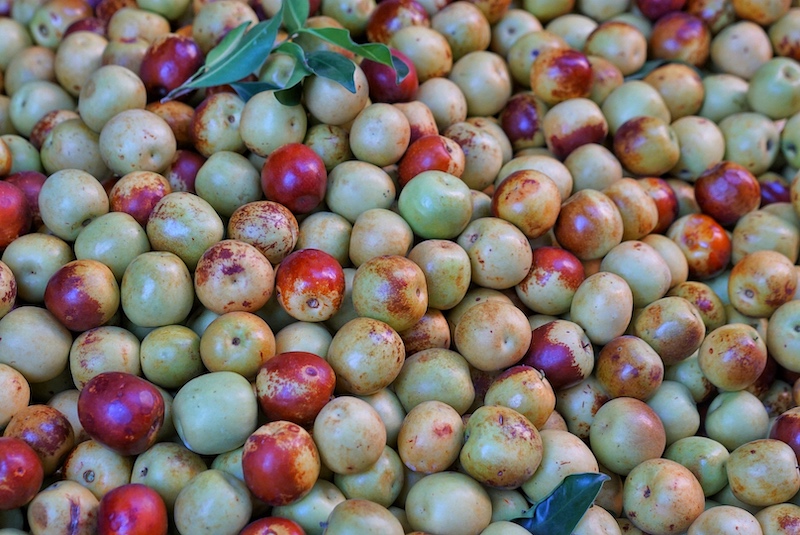
Image by Sophie Steiner/That's
Despite the name, Chinese winter dates, or jujubes, actually start appearing in fruit stands across mainland China at the end of summer.
By fall, they are everywhere, ranging in color from muted green to woody brown, with no taste difference between the different colored skin.
Crisp like apples, yet with a more concentrated sweetness, the fruits can be dried and used year-round in soups or as infusions in local sorghum or rice-based alcohols.
The bigger the fruit, the more cloying they tend to be, but no matter the size, the high fiber content and helpful TCM properties is what helps score them a well-deserved spot on tables across the country.
Fun Fact: There is documentation of these fruits being cultivated back in 9,000 BC, making it one of the oldest fruits ever recorded.
17. Marang
Image by Sophie Steiner/That's
Related to jackfruit, durian or breadfruit in outer appearance, marang is distinct in that its bold flavor is owed to its thick skin rather than the fruit itself.
Hailing from the Philippines, marang is like a mashed banana in consistency, with luscious notes of pineapple, jackfruit and a hint of durian funk.
The small bulbs, that look like wet garlic cloves, should be wolfed down within a few hours of opening as they oxidize quickly and lose flavor.
18. Hawthorn
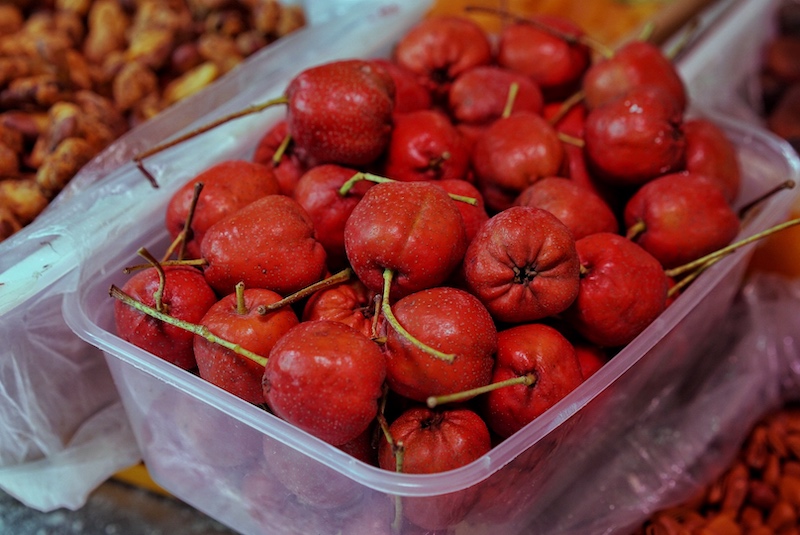
Image by Sophie Steiner/That's
Like small, grainy crab apples, hawthorns are tart and crunchy. Served as a popular winter snack around China, they are either powdered with snow-like sugar or covered in a brittle layer of hardened sugar syrup to balance out the lip-puckering acidity.

Image by Sophie Steiner/That's
A symbol of China’s colder weather, these cranberry-esque fruits and are often made into a thick jello/jelly and sold in candy form (as a fruit roll-up) or on a stick in the shape of a popsicle.
19. Guava

Image by Sophie Steiner/That's
Guava come in a variety of shapes and sizes, but are most notable for their lumpy exterior and bright green color.
Demurely sweet, guava boast more crunch near the outside, and a softer, pink center, spanning subtle to intensely sweet.
Fun Fact: You can eat the whole thing, seeds and all – you don't even have to peel it.
20. Persimmon

Image by Sophie Steiner/That's
A soupy pocket of syrupy succulence, persimmon grow wildly throughout parts of South China, and can be found in wet markets across the country during fall and winter.
To enjoy, just cut the fruit in half and scoop out each of the four squishy sections with a spoon. Dried persimmon are also regularly used in tea, soup, or as a snack.
Fun Fact: Persimmon's ancient Greek name, diospyros, means ‘food of the gods.’
21. Loquat
Image by Sophie Steiner/That's
Loquats have been used as ornamental plants (symbolizing gold and wealth) while their leaves have been brewed in tea around China and Japan for over a thousand years.
The squishy, pale orange fruits are in season during the spring, with a restrained honeyness to them, reminiscent of apricot.
High in pectin, loquats are regularly made into jams, and both the fruit and pits can be involved in alcoholic spirits production.
Fun Fact: Mentioned in famous Li Bai poems, loquats are referred to in Chinese as pipa (枇杷) due to their visual resemblance to a mini version of a four-stringed pipa lute.
22. Asian Pear

Image by Sophie Steiner/That's
Crisp, with a grainer finish and higher water content than its Western sister fruit (think lighter in flavor), the Asian pear can be grown year-round and savored for its pleasant sweetness.
While some can lean too far towards watery, when in season, Asian pears are incredibly refreshing.
Various strains are greenish brown – which tend to be tarter – while others are a pale yellowish white – which prove to be more cloying.
The round speckled versions are rarer, making them relatively expensive, so they are typically given as gifts or eaten on special occasions.
23. Buddha’s Hand

Image by Sophie Steiner/That's
While Buddha’s hand is not ingested on its own, this lemon-like citrus is coveted for its perfumery zest, used for flavoring any manner of dishes.
Buddha's hand can also be candied, infused in alcohol, baked, or added as a fresh scent to rooms or clothing.
Fun Fact: The protruding, finger-like segments are what give this strain of citron its name, the novelty mostly being in its shape, as it’s not discernible from lemon to most palates.
24. Dragon Fruit

Image by Sophie Steiner/That's
Don’t be fooled by its fire-breathing name, exotic dragon-egg look, flashy hot pink color, or spiky shell, this fruit is unfortunately lacking in the flavor department compared to so many others on this list.
In short, its bold appearance does not align with its flavor.
The mealy meat is not unlike an unripe kiwi, and only when it’s in season does it offer subtle sweetness.
However, if subdued flavor is what you're after, dragon fruit just might be your calling.
Fun Fact: Contrary to popular belief, the more elusive (and prized) ruby-hued flesh dragon fruit have the exact same flavor as their white-fleshed peers.
25. Durian
Image by Sophie Steiner/That's
Durian, the King of Fruits, gets a bad rep for smelling fermented and funky. And we mean overtly, stiflingly, and – at times – suffocatingly funky... like "rotting hot trash," according to The New York Times, USA Today, and Mashable, among many other more visceral descriptions.
Like blue cheese or stinky tofu, the polarizing nature of durian is real.
While the scent is powerful, similarly the consistency is unlike any other fruit, akin to wet bread dough.
So, it's no surprise that it's one of the most highly caloric fruits in the world, yet concurrently one of the most nutrient dense.
Slightly sweet, custardy and very tangy, durian has more than 30 recognized strains that vary widely from China to Thailand to Malaysia and beyond.
We're neither for nor against this divisive fruit; it's a personal preference that we leave wholly up to you, dear readers, to decide.
We're just here to state the durian facts, of which famed food and travel personality Anthony Bordain described as "leaving your breath smelling like you French kissed your dead grandmother."
You be the judge.
Pro Tip: If durian can be a bit much for your palate, put it in the freezer to enjoy it like ice cream with a more muted flavor profile.
Fun Fact: In many airports and transit hubs across Asia, durian are prohibited – listed alongside other contraband like guns and drugs – as the potent smell is strong enough to mess with the flow of traffic.
Bonus: Miracle Fruit
 Image via Pixaxbay
Image via Pixaxbay
Miracle fruit (aka magic berries) are similar in shape and color to red or green grapes. But, unlike grapes, when munched on, everything eaten for the following 10-20 minutes tastes sweet.
And we mean excessively sweet.
You can eat lemons like apples, drink beer like champagne, and sip vinegar like honey.
No, they don't contain some psychedelic drug, but rather a glycoprotein molecule called miraculin (yes, that’s really the name of this miraculous protein) that coats the taste buds and temporarily alters their shape.
This causes taste receptors to interpret certain flavors (mostly acerbic ones) to be far treaclier.
The fruits themselves are exceptionally bitter and sour, but as you force yourself to chew, in a matter of seconds, you can perceptibly feel the 'magic' begin to work, as the berry itself mellows into a faint sweetness.
Found across Africa, India, and Myanmar, these berries are on the EU list of novel foods, and require a safety assessment before they can be sold as food or used as a food additive.
Correspondingly, the USA’s FDA has imposed a ban on importing this fruit since 2011 as an "illegal undeclared sweetener."
Other Noteworthy Mentions
Wood apple, gooseberry, wax apple, pineberry, sea buckthorn, santol, duka, goji berry, kumquat, breadfruit, longsat, sapodilla, tamarillo, yuzu, noni and star fruit.
[Cover image by Sophie Steiner/That's]





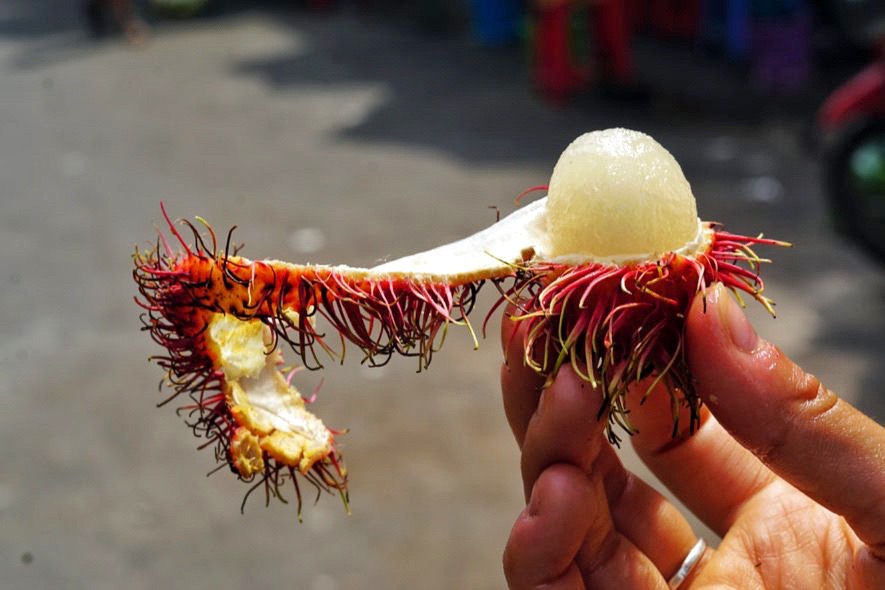



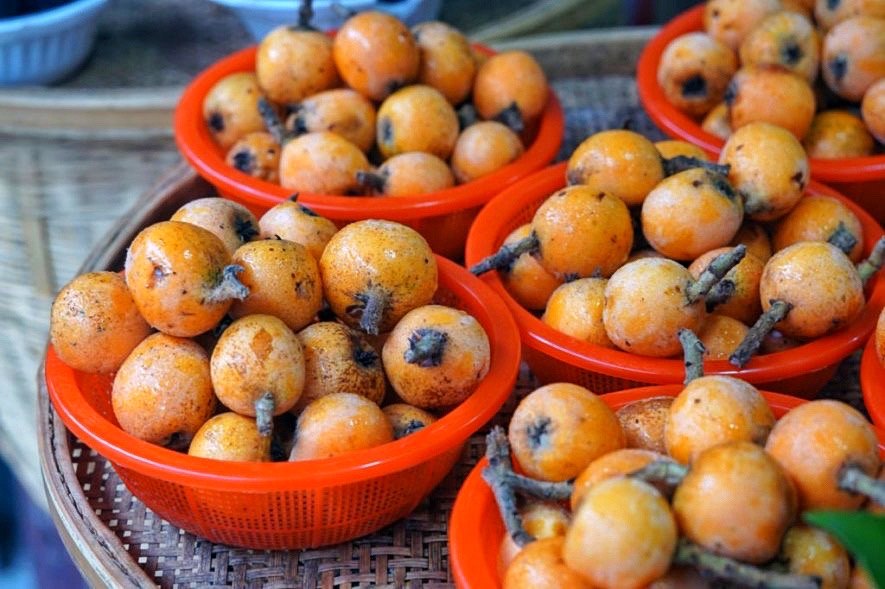
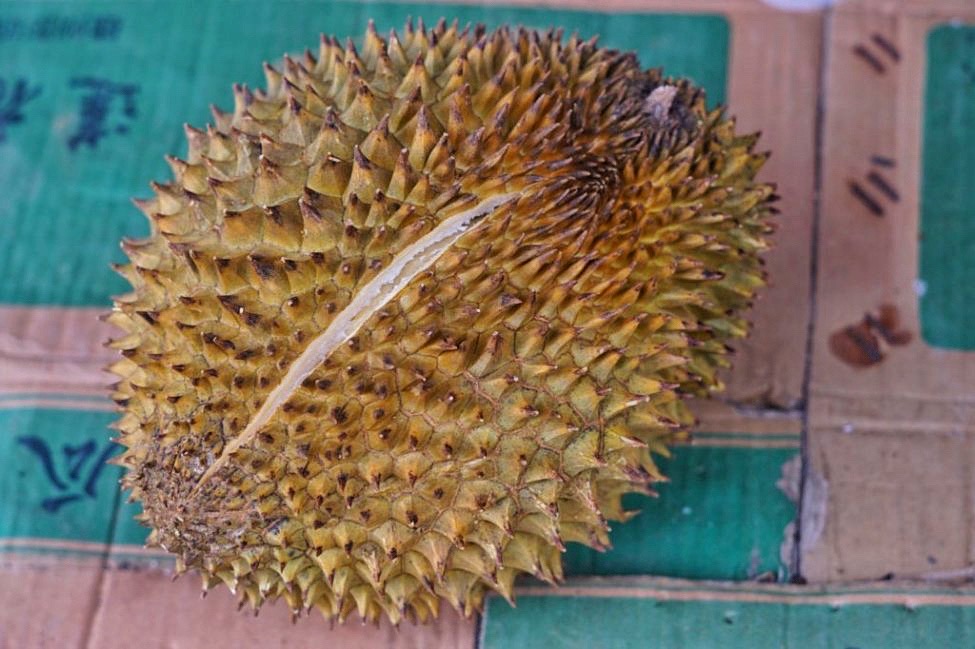
















0 User Comments